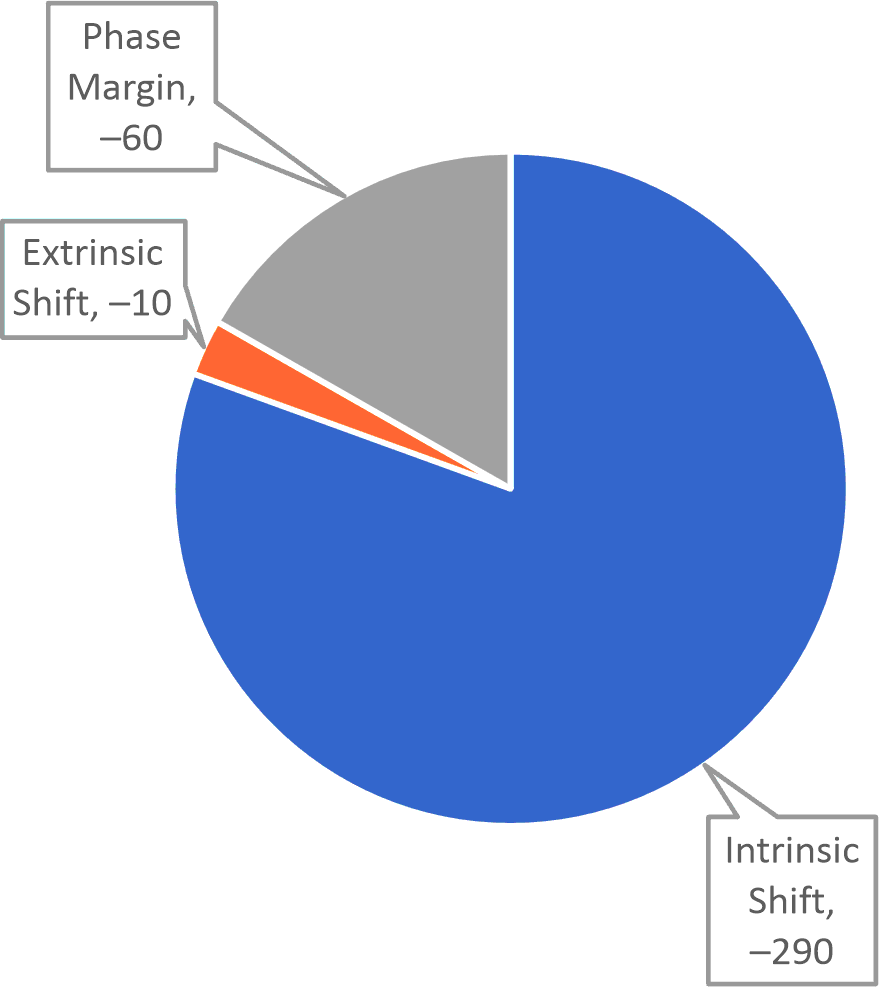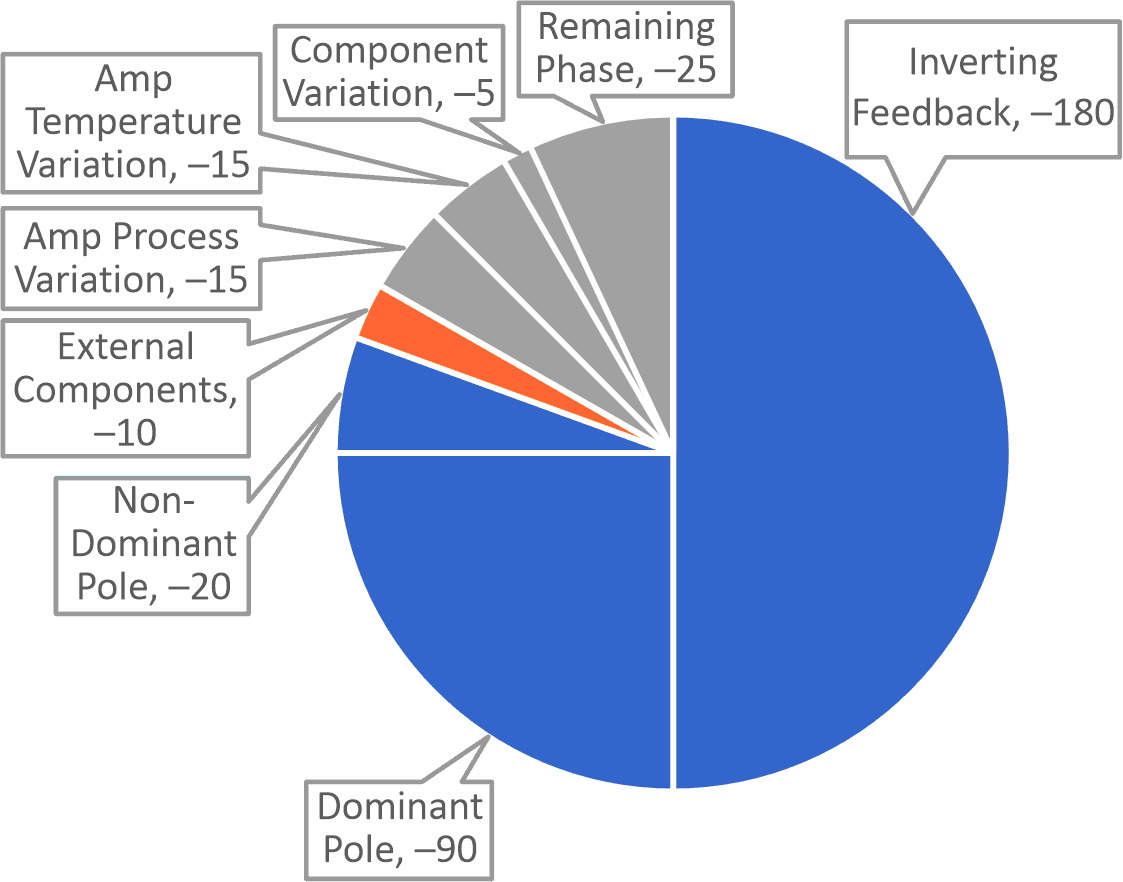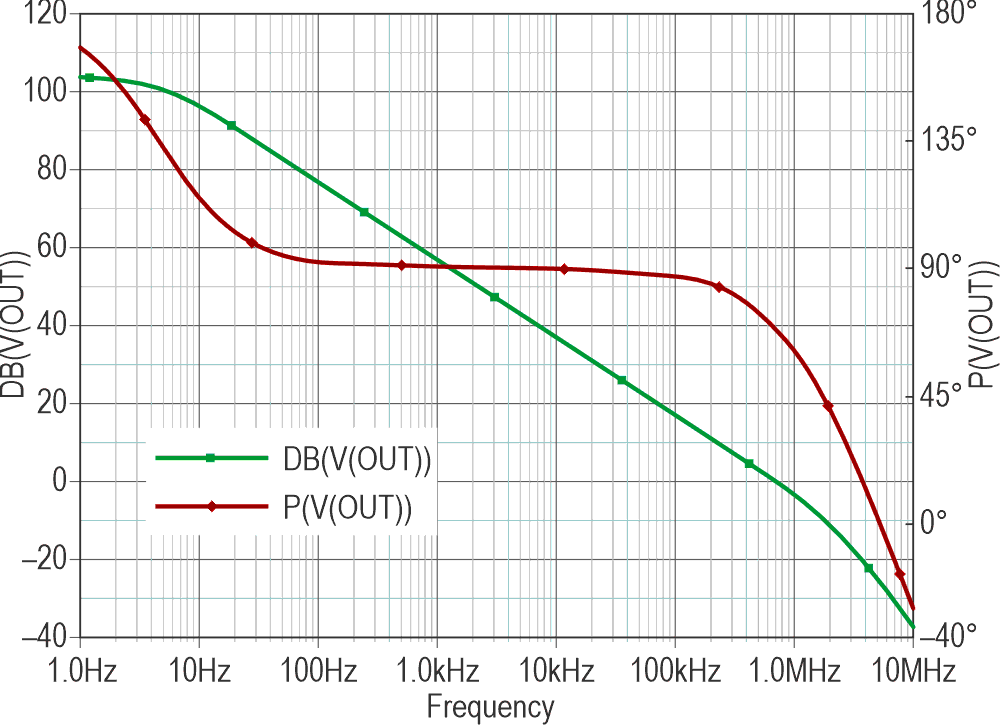In operational amplifier stability, one rule of thumb is to allow 45 degrees of phase margin. Other design guidelines state that 60 degrees is best; still others say that 30 degrees is sufficient. These numbers are all attempts to ensure stable performance over a range of variables, but let’s look at the factors that influence stability, and how these rules of thumb came to exist.
First, let’s have a brief overview of phase margin. Phase margin is the phase of loop gain at the frequency where the loop gain equals 0 dB. To ensure a stable feedback loop, the loop must remain in negative feedback. There are internal and external factors that shift the phase of the feedback loop, and if the phase shifts enough, the apparent polarity of the negative feedback can shift closer and closer toward positive feedback.
Phase lead is expressed as a positive value, and phase lag is expressed as a negative value. The factors influencing the phase shift are the inherent phase lag of inverting feedback, the phase lag introduced by the dominant and nondominant poles in the open-loop gain (AOL) of the amplifier, and the phase shift introduced from components external to the amplifier.
It’s possible to visualize the phase shift of the feedback loop with a pie chart, since 360 degrees of phase shift corresponds well to 360 degrees of a circle (Figure 1).
Each source of phase lag will take up more and more of the pie. Once you have reached 360 degrees of shift, you have consumed your whole phase margin pie, and the circuit is unstable. Phase lag is expressed as a negative phase shift, and phase lead is expressed as a positive phase shift.
 |
|
| Figure 1. | Pie chart of amplifier-loop phase shift is shown with numbers noted as degrees of phase margin. |
Looking at Figure 2, if the total shift is –180 degrees for inverting feedback, –90 degrees for the dominant AOL pole, –20 degrees for the nondominant AOL pole and –10 degrees from external components, then there is –60 degrees of phase shift before the amplifier reaches –360 degrees of phase shift and is in positive feedback.
 |
|
| Figure 2. | Here is an expanded pie chart of amplifier loop phase shift. |
In the classic two-pole approximation of an amplifier, what is the dominant factor or factors that vary over process and will impact the loop stability? The two most significant parameters in loop stability are the AOL and the open-loop output impedance (ZO).
The most common compensation scheme in operational amplifiers is Miller compensation, which involves placing a capacitor in negative feedback – typically across the second gain stage – in order to push the dominant pole lower in frequency without the need for large capacitors on the die. The capacitor across the internal gain stage is known as the Miller capacitor.
But because silicon manufacturing processes are optimized for the creation of transistors in silicon, and passive components on silicon are much less precise than the transistors, the dominant shift in AOL over process and temperature will be a result of variance in the value of the Miller capacitor, as well as some shift in the maximum AOL of the input stage.
Although Miller compensation reduces the need to create very large capacitors in silicon, it results in a large amount of variance in the AOL when the Miller capacitor varies over process and temperature. Looking at Figure 3, the worst case for stability will be a combination of two factors: an increase in AOL coupled with a smaller Miller capacitor results in a larger unity gain bandwidth.
 |
|
| Figure 3. | The above bode plot represents a typical operational amplifier. |
This means that the phase lag introduced by the nondominant poles at high frequency will more severely degrade the phase of the feedback loop.
The rule of thumb for bandwidth variation in operational amplifiers is 30% variation across process, and an additional 30% across temperature. The biasing structures set the open-loop output impedance, which can see variation over process; thus, a good approximation is about 15%. It’s because of the variance in these factors, as well as some other parametric shifts in the amplifier over process, that drive the recommendation for 45 degrees of phase margin.
The recommendations for 30 degrees and 60 degrees of phase margin have their own trade-offs: 30 degrees of phase margin means more overshoot over process and temperature variation, as well as the potential that a small number of manufactured systems could be unstable. However, it may give a faster settling time. On the other hand, 60 degrees of phase margin will result in lower maximum overshoot on the output of the amplifier, but since this is a more damped system, the trade-off is a slower settling time.
In most cases, 45 degrees of phase margin is a good rule. For high-speed applications with rigorous testing, 30 degrees of phase margin is acceptable. For sensitive systems that cannot tolerate overshoot, it can be helpful to design for 60 degrees of phase margin.
The variation in the Miller capacitor will drive large changes in the location of the dominant pole in an operational amplifier. This, coupled with variations in the input-stage gain, can cause systems with insufficient phase margin to become unstable.
Allowing for 45 degrees of phase margin in your design will protect it from large shifts wrought by large component tolerances in manufacturing.
